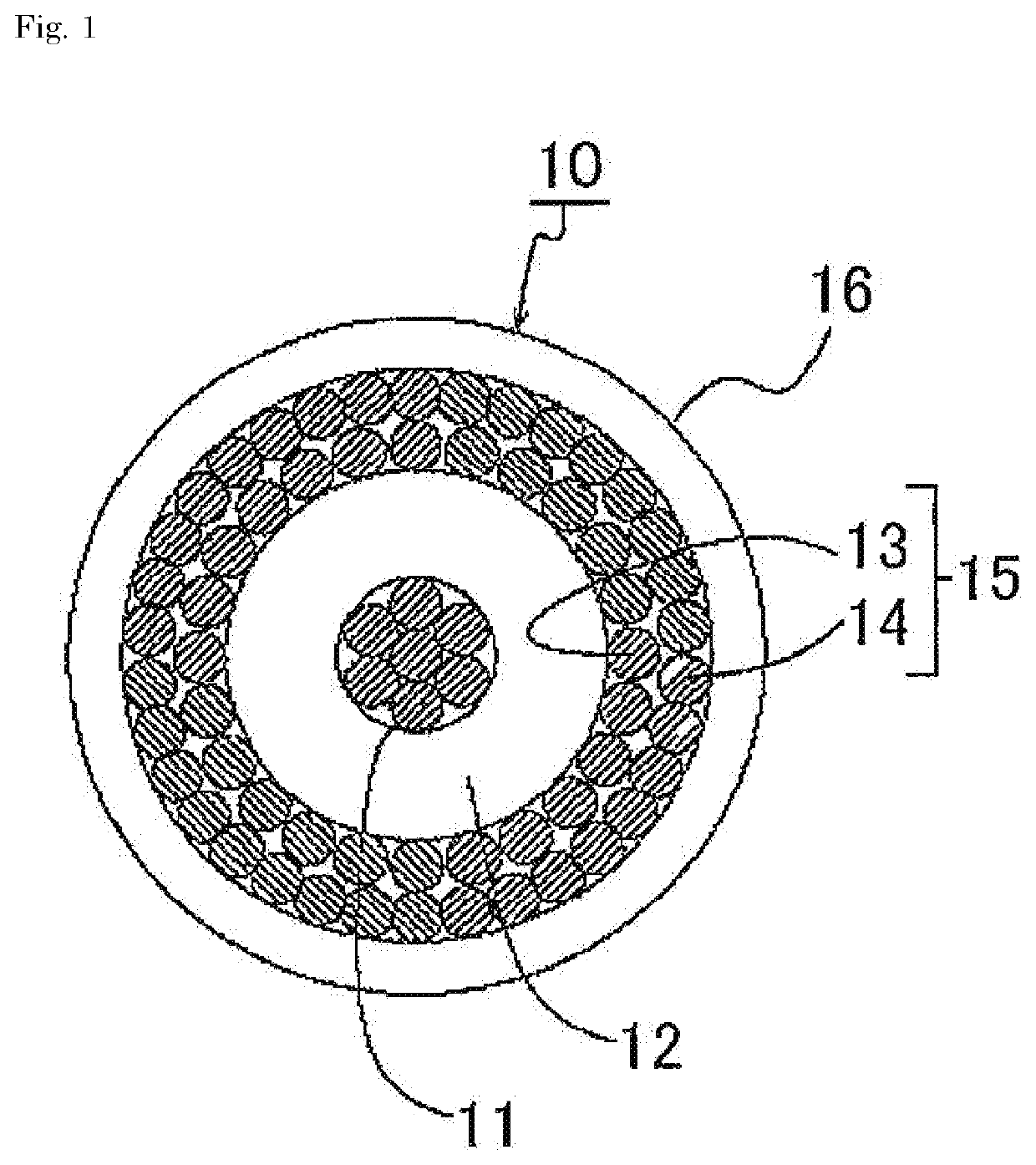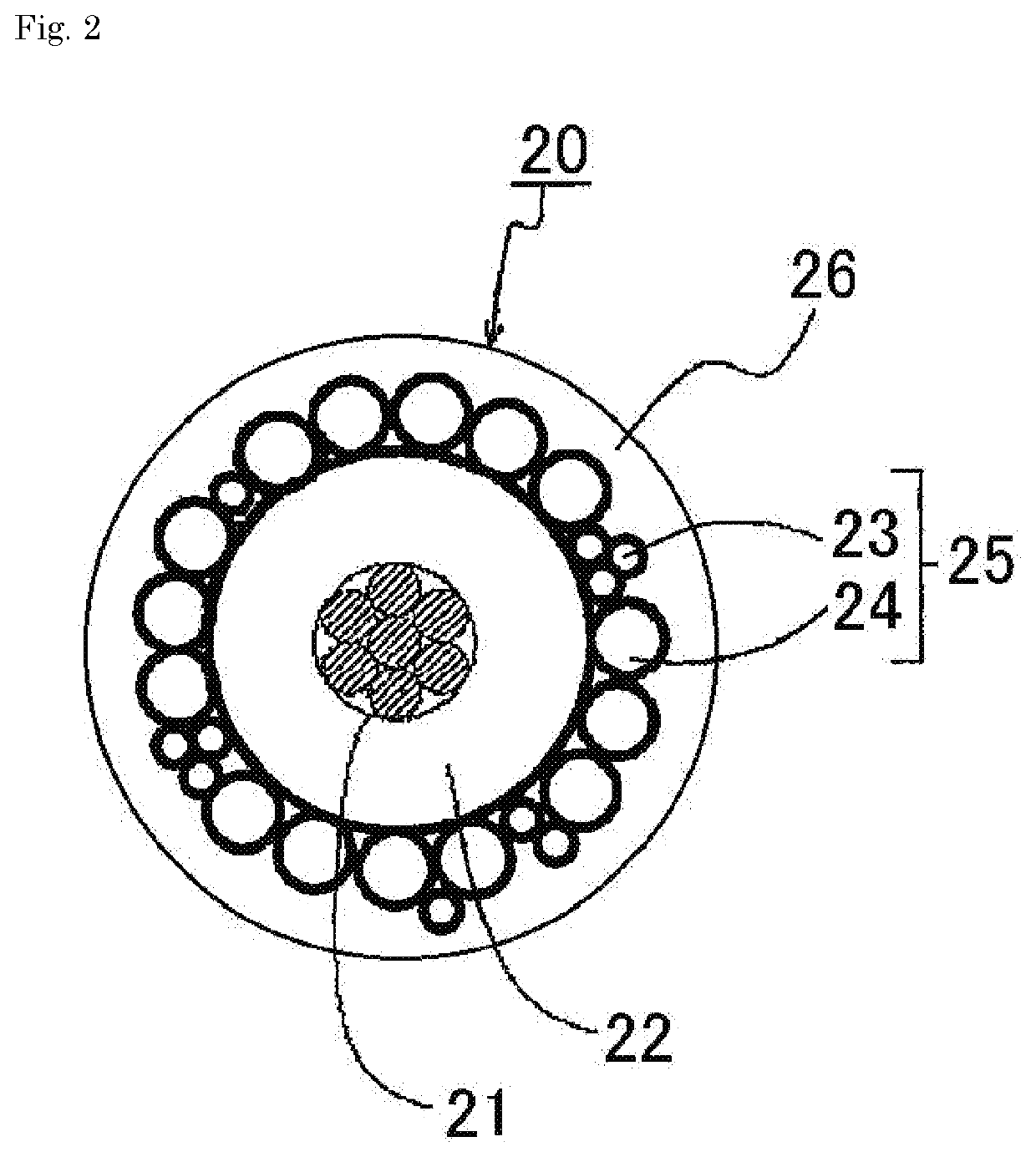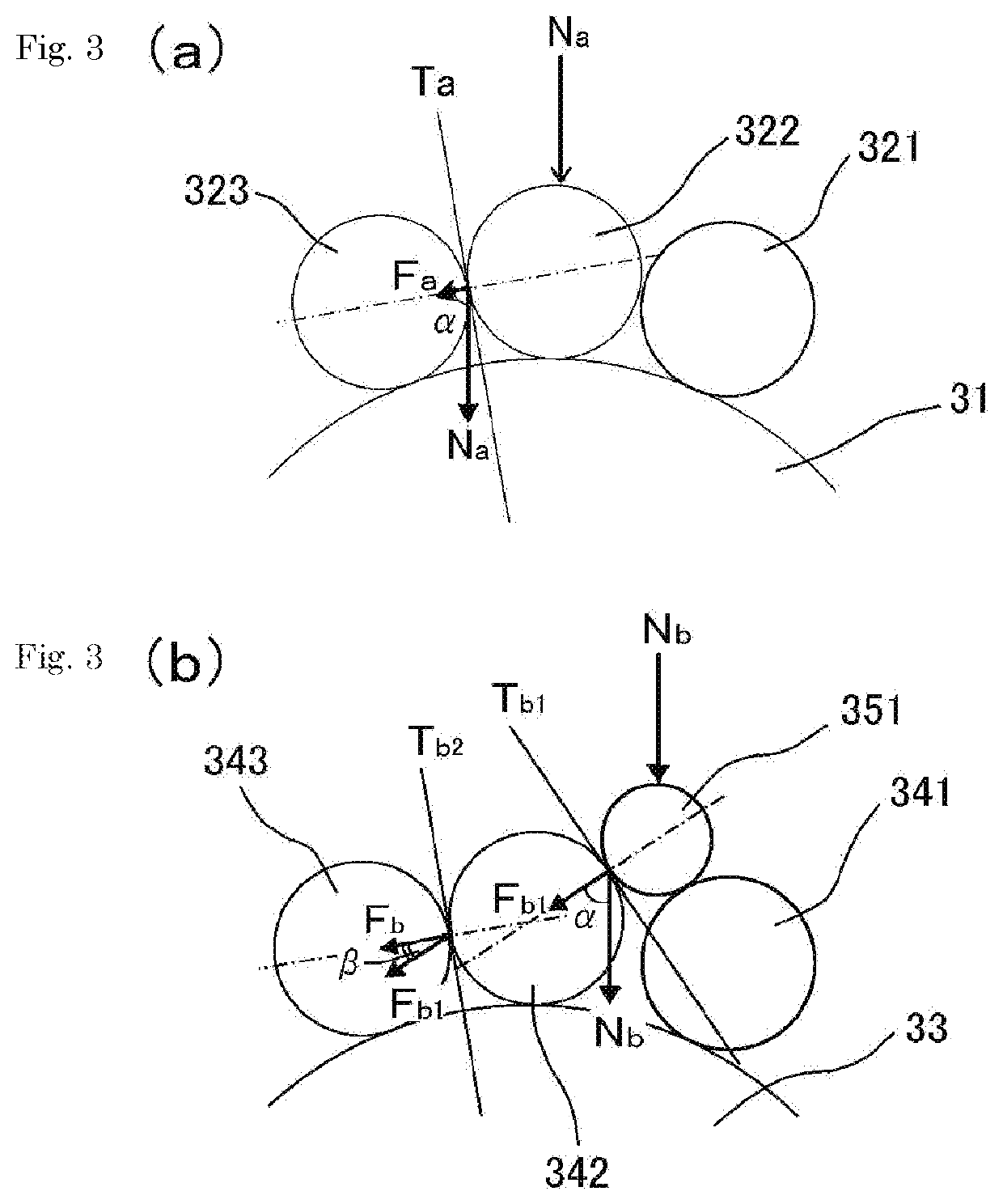Coaxial cable
a coaxial cable and cable technology, applied in coaxial cables/analogue cables, cables, electrical equipment, etc., can solve the problems of large friction between the strands constituting the outer conductor, insufficient flexibility, poor productivity, etc., and achieve excellent shielding characteristics and small friction
- Summary
- Abstract
- Description
- Claims
- Application Information
AI Technical Summary
Benefits of technology
Problems solved by technology
Method used
Image
Examples
embodiment
[0052]A coaxial cable was prepared so that the characteristic impedances were substantially equal, and the far-end crosstalk was measured by changing the frequency of the transmission signal as a two-core parallel cable in which two cores were arranged in parallel. By suppressing the crosstalk, the shielding characteristic of the coaxial cable can be confirmed.
example 1
[0053]As the center conductor, a AWG40 conductor (a conductor having an outer diameter of 0.09 mm by twisting seven silver-plated copper-alloy strands having an outer diameter of 0.03 mm) was used, and as the insulator layer, PFA was extruded to a thickness of 0.075 mm to obtain an outer diameter of 0.24 mm. The exterior of the insulation layer was rolled horizontally by combining 24 silver-coated soft copper lines having a strand-diameter of 0.03 mm and 8 silver-coated hard copper lines having a strand-diameter of 0.021 mm, and passed through a 0.31 mm die to form an outer conductor. A coaxial cable was produced by extruding 0.03 mm thick PFA onto the outer circumference of the outer conductor. This coaxial cable was used to make a two-core parallel cable, and the far-end crosstalk was measured.
example 2
[0054]A coaxial cable was prepared in the same manner as in Example 1 except that 19 silver-plated soft copper wires having a strand-diameter of 0.04 mm and 8 silver-plated hard copper wires having a strand-diameter of 0.021 mm were mixed and wound laterally as the outer conductor, and a two-core parallel cable was prepared to measure the far-end crosstalk.
PUM
| Property | Measurement | Unit |
|---|---|---|
| frequency | aaaaa | aaaaa |
| frequency | aaaaa | aaaaa |
| outer diameter | aaaaa | aaaaa |
Abstract
Description
Claims
Application Information
 Login to View More
Login to View More - R&D
- Intellectual Property
- Life Sciences
- Materials
- Tech Scout
- Unparalleled Data Quality
- Higher Quality Content
- 60% Fewer Hallucinations
Browse by: Latest US Patents, China's latest patents, Technical Efficacy Thesaurus, Application Domain, Technology Topic, Popular Technical Reports.
© 2025 PatSnap. All rights reserved.Legal|Privacy policy|Modern Slavery Act Transparency Statement|Sitemap|About US| Contact US: help@patsnap.com



